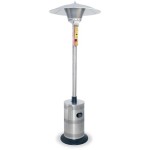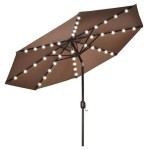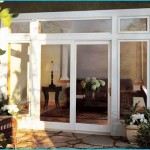The Enduring Appeal of Patio Furniture Rocking Chairs: A Comprehensive Guide
Patio furniture rocking chairs represent a classic addition to outdoor spaces, offering a blend of comfort, relaxation, and aesthetic appeal. Their gentle rocking motion has been associated with stress reduction and tranquility for centuries, making them a popular choice for homeowners seeking to create a peaceful outdoor retreat. This article provides a comprehensive overview of patio furniture rocking chairs, exploring their various types, materials, benefits, selection criteria, and maintenance considerations.
Rocking chairs have a long and storied history, often linked to Benjamin Franklin, although the exact origins remain somewhat ambiguous. Regardless of their inventor, rocking chairs quickly gained popularity in the United States and beyond, becoming a staple in homes and on porches. The adaptation of the rocking chair for outdoor use, specifically as patio furniture, expanded its utility and appeal, allowing individuals to enjoy the soothing motion in natural settings.
Types of Patio Furniture Rocking Chairs
Patio furniture rocking chairs are available in a wide array of styles to suit diverse aesthetic preferences and functional needs. Understanding the various types is crucial for making an informed purchasing decision. Some of the most common types include:
Traditional Rocking Chairs: These chairs typically feature a classic design with spindled backs, contoured seats, and gracefully curved rockers. They often evoke a sense of nostalgia and tradition, making them well-suited for homes with a more traditional architectural style. Materials commonly used in traditional rocking chairs include wood, such as oak, pine, or cedar, as well as wrought iron.
Adirondack Rocking Chairs: Combining the iconic Adirondack chair design with the rocking motion, these chairs offer a distinctive blend of comfort and style. They are characterized by their wide, slatted backs, deep seats, and angled armrests. Adirondack rocking chairs are often constructed from weather-resistant materials like teak, recycled plastic, or treated wood to withstand outdoor conditions.
Glider Rocking Chairs: Unlike traditional rocking chairs that move on curved rockers, glider rocking chairs utilize a smooth, linear gliding motion. This gliding motion is often preferred by individuals seeking a more consistent and controlled rocking experience. Glider rocking chairs typically feature a metal frame with padded cushions for added comfort. They are often found in nurseries and on patios.
Swivel Rocking Chairs: These chairs combine the rocking motion with the ability to swivel 360 degrees, offering enhanced flexibility and versatility. Swivel rocking chairs are ideal for individuals who enjoy socializing outdoors, as they can easily turn to face different directions. They are often constructed with a sturdy metal base and upholstered with weather-resistant fabrics.
Modern Rocking Chairs: Embracing contemporary design aesthetics, modern rocking chairs often feature minimalist lines, geometric shapes, and innovative materials. They may incorporate elements such as sleek metal frames, molded plastic seats, or woven synthetic fibers. Modern rocking chairs are well-suited for homeowners seeking to create a stylish and contemporary outdoor space.
Hanging Rocking Chairs: Offering a unique and whimsical seating option, hanging rocking chairs are suspended from a sturdy frame or overhead structure. They provide a gentle swaying motion that can be particularly relaxing. Hanging rocking chairs are often made from materials such as rope, wicker, or fabric, and they can be a focal point in any outdoor setting.
Key Considerations for Selecting Patio Furniture Rocking Chairs
Choosing the right patio furniture rocking chair involves careful consideration of several factors, including material durability, comfort, style, size, and budget. Addressing these factors will help ensure that the selected chair meets individual needs and preferences.
Material Durability: Patio furniture is exposed to various weather conditions, including sun, rain, wind, and temperature fluctuations. Therefore, selecting durable materials that can withstand these elements is crucial. Common materials include teak, cedar, recycled plastic, aluminum, and wrought iron. Teak is known for its natural resistance to rot and decay, while recycled plastic is a sustainable and low-maintenance option. Aluminum is lightweight and rustproof, and wrought iron offers a classic and durable aesthetic. The choice of material should align with the climate and level of maintenance desired.
Comfort: The primary purpose of a rocking chair is to provide comfort and relaxation. Consider the seat depth, back height, and armrest design when evaluating comfort. Some rocking chairs are equipped with cushions or padding for added support. It is advisable to test the chair before purchasing to ensure it provides adequate comfort for extended periods of sitting. The ergonomics of the chair, including lumbar support and proper seat angle, should also be assessed.
Style: Patio furniture should complement the overall aesthetic of the outdoor space and the homeowner's personal style. Rocking chairs are available in a wide range of styles, from traditional to modern, and in various colors and finishes. Consider the architectural style of the home and the existing patio furniture when selecting a rocking chair. A cohesive design will create a more visually appealing and harmonious outdoor environment.
Size and Space: The size of the rocking chair should be proportionate to the available space. Consider the footprint of the chair and the amount of clearance needed for comfortable rocking. Measure the area where the chair will be placed to ensure it fits comfortably without obstructing walkways or other furniture. Smaller rocking chairs are ideal for smaller patios or balconies, while larger chairs may be more suitable for expansive outdoor areas.
Budget: Patio furniture rocking chairs are available at various price points. Establish a budget before starting the shopping process to narrow down the options. Keep in mind that higher-quality materials and more intricate designs often come with a higher price tag. It is important to balance cost with durability and comfort to ensure long-term satisfaction.
Maintenance and Care of Patio Furniture Rocking Chairs
Proper maintenance and care are essential for prolonging the lifespan of patio furniture rocking chairs and preserving their aesthetic appeal. The specific maintenance requirements will vary depending on the materials used in the chair's construction. However, some general guidelines apply to most types of patio furniture rocking chairs.
Regular Cleaning: Regularly clean the rocking chair to remove dirt, dust, and debris. Use a mild soap solution and a soft brush or cloth to clean the surface. Rinse thoroughly with clean water and allow the chair to dry completely before using it. For wood furniture, consider using a wood cleaner and conditioner to protect the finish.
Protection from the Elements: When not in use, protect the rocking chair from the elements by covering it with a waterproof cover or storing it indoors. This will help prevent damage from sun exposure, rain, and snow. Cushions should be stored indoors when not in use to prevent fading and mildew growth.
Seasonal Maintenance: Perform a more thorough maintenance check at the beginning and end of each outdoor season. Inspect the chair for any signs of damage, such as cracks, splinters, or rust. Tighten any loose screws or bolts and repair any minor damage promptly. For wooden chairs, apply a fresh coat of sealant or stain to protect the wood from moisture and UV damage.
Specific Material Care: Different materials require specific care techniques. Teak furniture benefits from regular oiling to maintain its natural luster. Recycled plastic furniture can be cleaned with a pressure washer. Aluminum furniture can be cleaned with a mild detergent and water. Wrought iron furniture should be inspected for rust and treated with a rust inhibitor as needed. Consult the manufacturer's instructions for specific care recommendations for the material used in the rocking chair.
Cushion and Fabric Care: Cushions and fabrics should be cleaned regularly to prevent staining and mildew growth. Spot clean spills immediately with a mild soap solution. Periodically wash the cushions and fabrics according to the manufacturer's instructions. Consider using a fabric protector to repel water and stains.
By adhering to these maintenance and care guidelines, homeowners can ensure that their patio furniture rocking chairs remain comfortable, attractive, and durable for years to come. This will contribute to a more enjoyable and relaxing outdoor experience.
:max_bytes(150000):strip_icc()/hampton-bay-rocking-chairs-81849-64_1000-8b6ee7d8a026430e9d2f7e7b16891a10.jpg?strip=all)
11 Best Outdoor Rocking Chairs

Corvus Rno Brown Wicker Outdoor Rocking Chair With Cushions Cc033 The Home Depot

Outdoor Rocking Chairs Patio Furniture

Joyside 3 Piece Wicker Patio Swivel Outdoor Rocking Chair Set With Beige Cushions And Table M01 The Home Depot

Homall Patio Furniture Set Outdoor Rocker All Weather Pp Rocking Chair With Cushion Of 3 Black Com

2pk Patio Swivel Rocking Chairs Brown Captiva Designs Target

Better Homes Gardens Ventura Outdoor Steel Rocking Chair Natural Rush Weave Com

Tortuga Outdoor Wicker Brown Aluminum Frame Rocking Chair S With Woven Seat In The Patio Chairs Department At Com

Corvus Antonio Black Metal Outdoor Rocking Chair With Sling Fabric Cc062 Bkbk The Home Depot

Seneca Outdoor Swivel Rocking Chair Country Casual Teak
Related Posts








